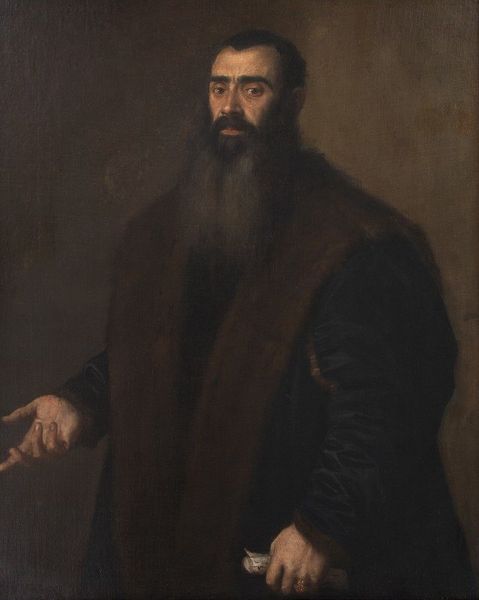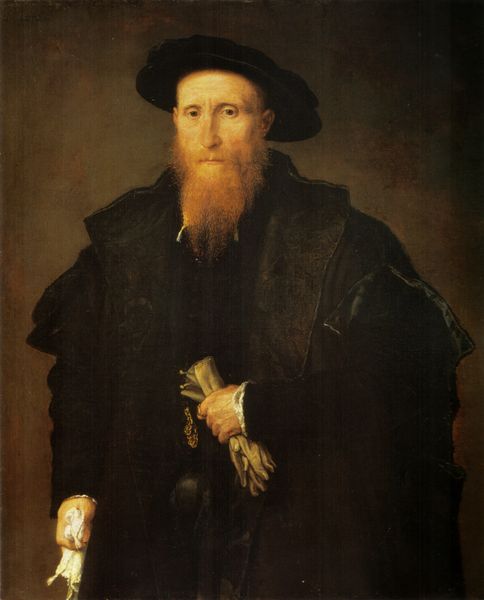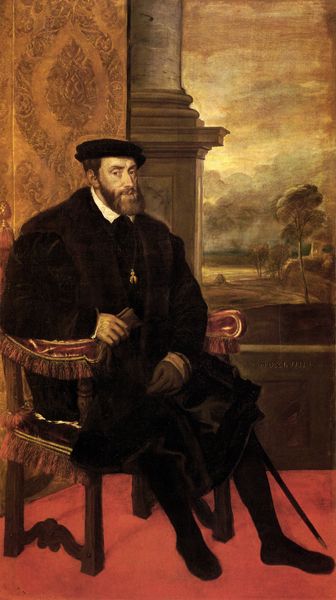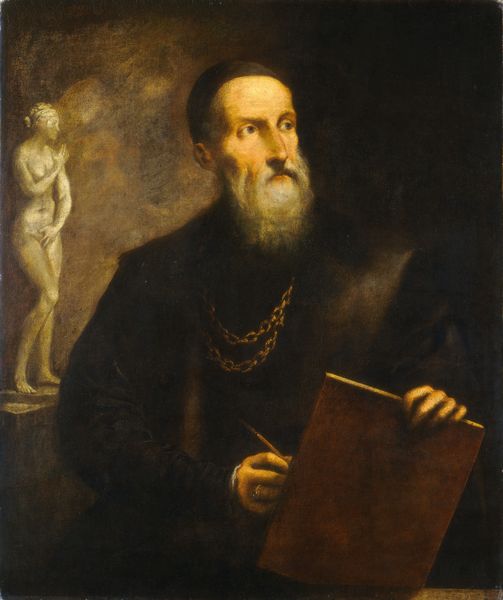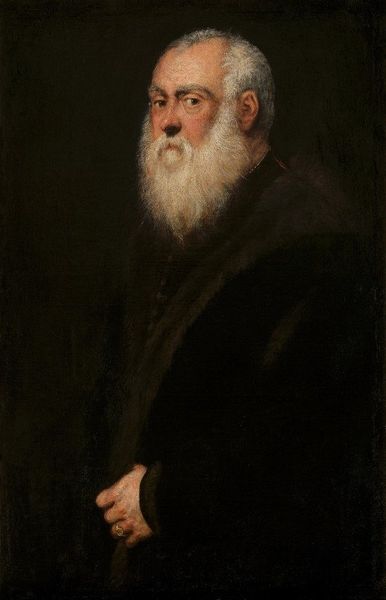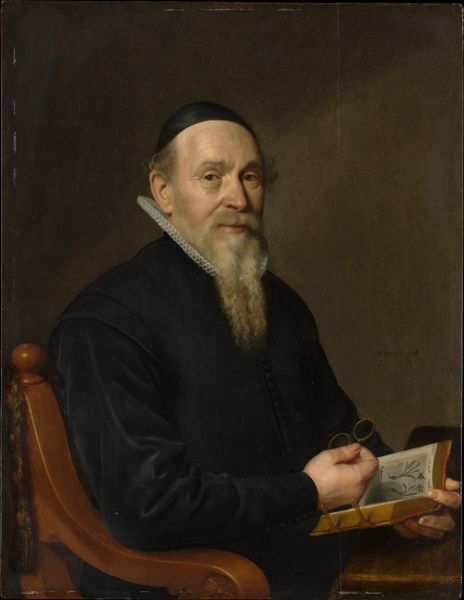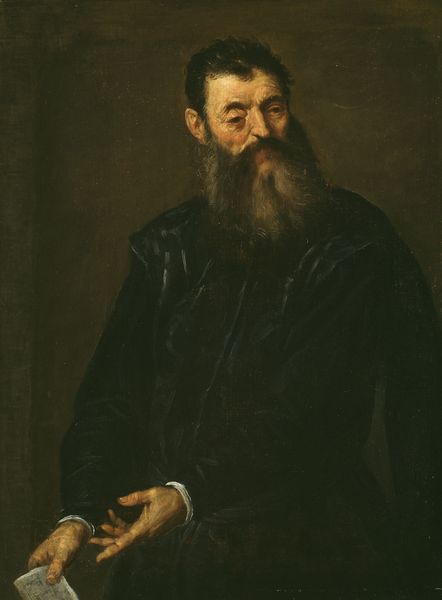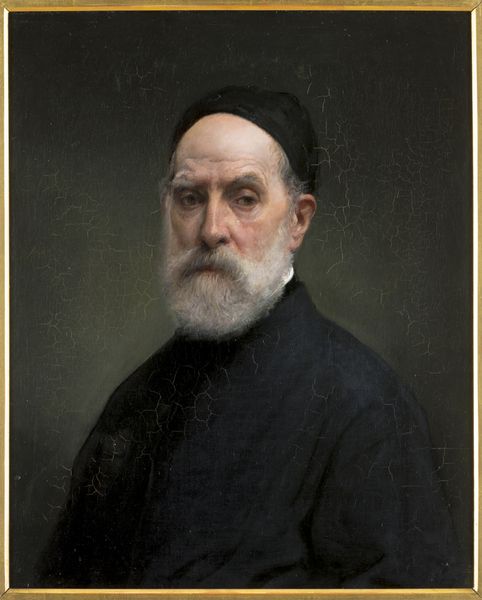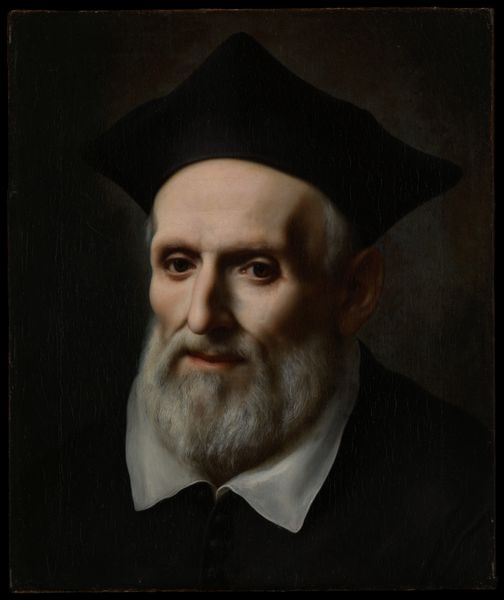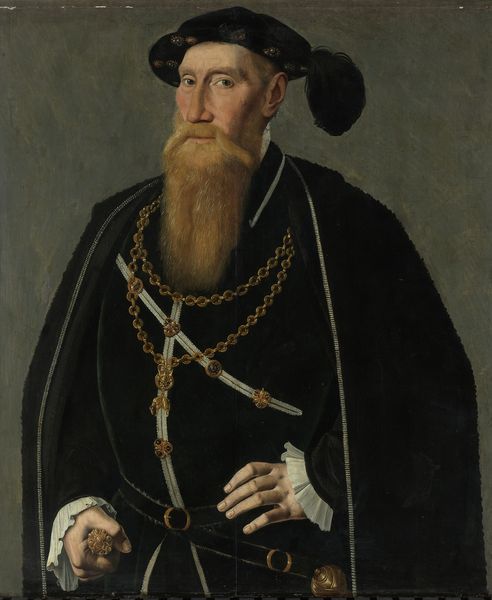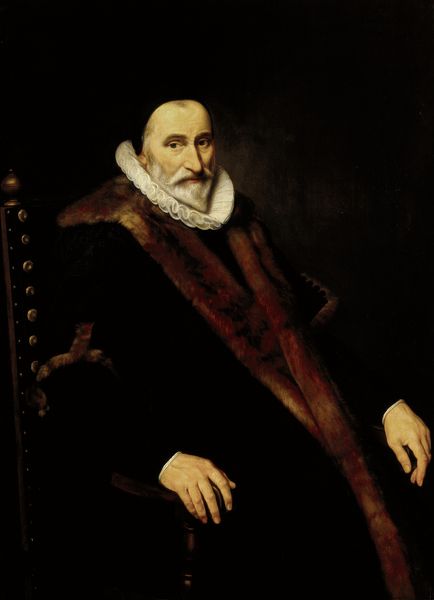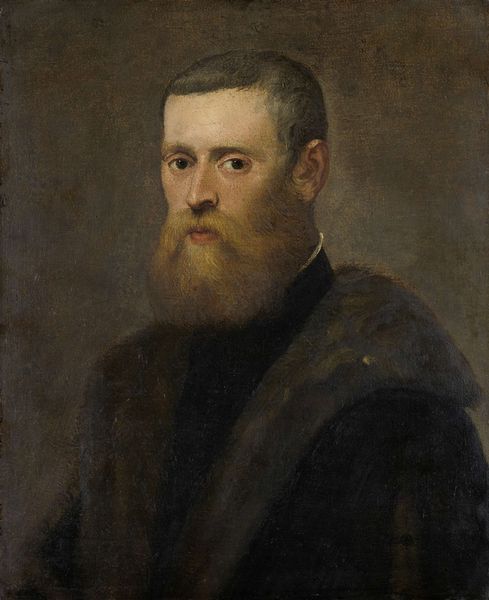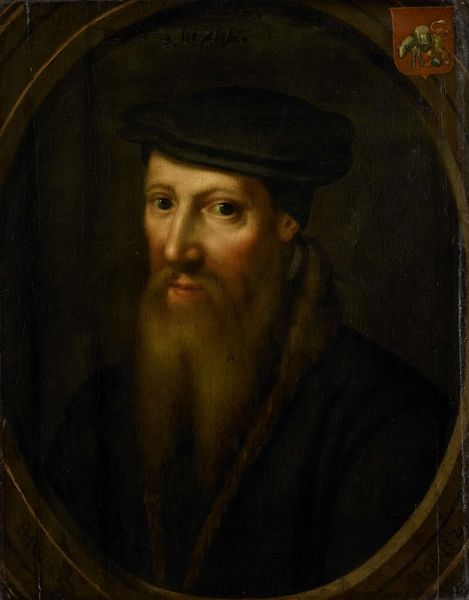
painting, oil-paint
#
portrait
#
self-portrait
#
painting
#
oil-paint
#
history-painting
#
italian-renaissance
Dimensions: 86 x 65 cm
Copyright: Public domain
Editor: Here we have Titian's "Self-Portrait" from 1567, a painting held at the Museo del Prado. The use of oil on canvas gives it such a somber, reflective mood, and I'm really struck by how the artist captures what appears to be their own ageing. What stands out to you about this particular piece? Curator: Certainly. Let us consider the formal properties of Titian’s construction here. The limited palette of primarily blacks and browns, punctuated only by the flesh tones and gold chain, concentrates visual interest. Do you observe the diagonal emphasis established from the upper left to the lower right? The thrust of the composition directs the eye along his brow line, through his beard, and down toward his hand with the brush, the instrument of his craft. Editor: Yes, I see that now. The way the light catches his face really draws you in, especially with such a dark background. The details are amazing. Curator: Precisely. Note, too, how the application of paint varies. See the impasto, particularly evident in the beard, compared with the more subtle gradations used to model the face. This contrast directs attention while offering clues regarding Titian's mastery of his medium and an introspective turn inward at this late stage of his career. The rendering offers not only a visual likeness, but perhaps even hints at the intellectual vigor, of a self-aware and self-assured Renaissance master. Editor: I hadn't considered how much the painting's physical texture adds to that sense of internal reflection. I see a new depth to it now, recognizing his conscious decision-making and formal skill, thanks! Curator: Indeed. Attention to form reveals intention, offering a vocabulary for enhanced perception.
Comments
No comments
Be the first to comment and join the conversation on the ultimate creative platform.
